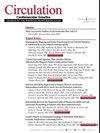Cardiovascular Disease and Long Noncoding RNAs: Tools for Unraveling the Mystery Lnc-ing RNA and Phenotype.
引用次数: 14
Abstract
The last decade has ushered in a surge of genetic information with budget-friendly and more efficient sequencing technologies adding to our understanding of human development and disease. The sequencing of the human genome was a remarkable feat, yet using this information to understand human health and disease has proven to be challenging. The mammalian genome is comprised of a complex infrastructure of defined nucleotide sequences and dynamic epigenetic modifications that result in shifts in gene expression patterns and subsequent developmental and phenotypic outcomes. Genome wide association studies (GWAS) have demonstrated the link between alterations in nucleotide sequences created by mutations, such as single nucleotide polymorphisms (SNPs) and disease. However, it remains unclear how SNPs alter gene expression patterns and phenotypes. One hypothesis links SNP containing regions to mutational phenotypes via changes to epigenetic processes that control how genes are regulated, such as DNA methylation and histone acetylation. SNPs are changes in nucleotide sequences that occur in at least 1% of the population. It is estimated that there are 10 to 30 million SNPs in humans that occur every 100 to 300 bases, and this variation is the major source of heterogeneity among people. A nonsynonymous SNP changes the amino acid sequence of a protein-coding gene. Less than 10% of SNPs are nonsynonymous, whereas 90% occur in nonprotein coding regions of the genome.1 SNPs can be found in regions of deoxyribonuclease I (DNase I) hypersensitivity or promoters affecting transcription factor–binding sites and chromatin state. SNPs can create or delete microRNA-binding sites in 3′ untranslated regions (UTRs) affecting microRNA target mRNA expression.2 SNPs can also be found in regions expressing noncoding RNAs, such as long noncoding RNAs (lncRNAs) leading to alterations in their expression patterns. SNPs can affect alternative splicing and the secondary structure of an RNA transcript leading to …心血管疾病和长链非编码RNA:解开RNA和表型之谜的工具。
本文章由计算机程序翻译,如有差异,请以英文原文为准。
求助全文
约1分钟内获得全文
求助全文
来源期刊

Circulation: Cardiovascular Genetics
CARDIAC & CARDIOVASCULAR SYSTEMS-GENETICS & HEREDITY
自引率
0.00%
发文量
0
审稿时长
6-12 weeks
期刊介绍:
Circulation: Genomic and Precision Medicine considers all types of original research articles, including studies conducted in human subjects, laboratory animals, in vitro, and in silico. Articles may include investigations of: clinical genetics as applied to the diagnosis and management of monogenic or oligogenic cardiovascular disorders; the molecular basis of complex cardiovascular disorders, including genome-wide association studies, exome and genome sequencing-based association studies, coding variant association studies, genetic linkage studies, epigenomics, transcriptomics, proteomics, metabolomics, and metagenomics; integration of electronic health record data or patient-generated data with any of the aforementioned approaches, including phenome-wide association studies, or with environmental or lifestyle factors; pharmacogenomics; regulation of gene expression; gene therapy and therapeutic genomic editing; systems biology approaches to the diagnosis and management of cardiovascular disorders; novel methods to perform any of the aforementioned studies; and novel applications of precision medicine. Above all, we seek studies with relevance to human cardiovascular biology and disease.
 求助内容:
求助内容: 应助结果提醒方式:
应助结果提醒方式:


